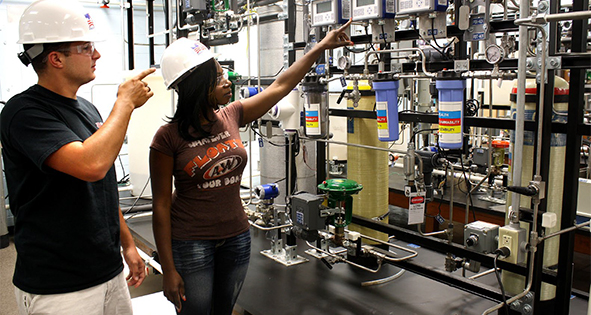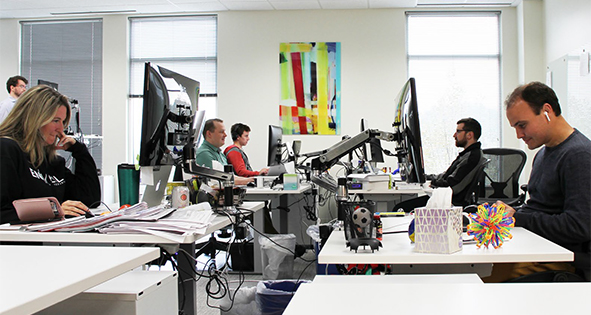
Florida: Melting Pot of Culture and Business
21 Nov, 2016
By Lori Culpepper
Pro-business leadership, rural opportunities, streamlined regulatory environment, incentives and tax advantages are some of the assets that help companies expand throughout Florida.
To make sure this list grows, Florida’s government and economic development leaders are working on legislative, fiscal and marketplace initiatives such as insurance tort reform, targeted industry incentives and others. Florida is also a right-to-work state.
Florida offers a cost-efficient alternative to other competitive high-tech states with affordable land, labor and capital. Businesses in certain targeted industries or specialized locations may be eligible for additional financial incentives. Businesses looking for workforce training, road infrastructure or specialized locations may also qualify for specific incentive programs.
The state is home to those who speak more than 250 languages; a melting pot that is supported by Florida’s multi-modal infrastructure that brings 19.9 million residents and more than 98.9 million tourists in and out of the state each year. This includes international airports, deep-water shipping ports, extensive highway and rail networks and multiple hubs that allow for high-speed data transmission from around the U.S. to Europe, Latin America and Africa.
Gov. Rick Scott says that significant investment has been made in the state’s 15 seaports, which is achieving its goal to add more than 150,000 trade jobs in the last four years. He says major investments in airports have also helped bring record numbers of tourists to Florida.
Florida is the location of regional and hemispheric headquarters for companies from all over the world, an international banking center and a diplomatic hub with a Consular Corps representing 81 nations. Many international firms base other facilities, such as warehousing, distribution and manufacturing, in Florida to take advantage of its access to global markets.
Merchandise trade valued at $147.4 billion flowed through the state’s airports and seaports in 2015, making the state one of the world’s leaders in international trade. Enterprise Florida and its partners around the state provide exporting assistance services to Florida-based companies looking to expand internationally. Scott says that Enterprise Florida has won more than 400 competitive projects for new jobs, including projects like Hertz and Navy Federal Credit Union.
Ranked fifth in the nation for high-tech employment by a TechAmerica’s Cyberstates report, Florida has approximately 267,500 high-tech workers. In 2015, Florida was home to the nation’s third largest workforce of more than 9.7 million workers.
CareerSource Florida, the state’s innovative partnership for workforce training, provides programs such as Quick Response Training and Incumbent Worker Training to help existing and new companies recruit, train and maintain workers with cutting-edge skills so they can keep pace with new technologies.
Florida’s colleges and universities are among the nation’s top performers for research & development (R&D) and technology commercialization. In 2012, Florida universities performed more than $1.98 billion in sponsored research, working closely with industries to create cutting-edge technologies.
In the last four years, Scott says the unemployment rate in Florida has been cut in half, going from 11.1 percent to 5.6 percent. More than 728,000 private-sector jobs have been added to the economy, and in the last year, approximately 250,000 new residents have moved to the state, making it the third largest in the nation.
Flagler County
By Rachel Hamilton
Flagler County, Florida, is on the state’s east coast just north of Daytona Beach, along Interstate 95. Designs for Health (D4H), a nutritional supplements producer, has expanded operations in Palm Coast, the largest city in the county.
D4H is investing “in excess of $3 million in site acquisition and upgrades,” according to Helga van Eckert, executive director of the Flagler County Department of Economic Opportunity. D4H already has more than 200 employees and expects to add 50 new jobs with an average yearly wage expectation of $33,000.
Delta Engineering, which is headquartered in Delaware, has “expanded its operation to Flagler County,” van Eckert says. “They have leased the airport’s 14,000 square-foot corporate office and hangar. The facility will initially house […] approximately 10 key engineering research and design positions and later expand to include manufacturing and installation services.”
Flagler County Airport, located just west of I-95, “is investing $12 million in facility upgrades and a runway expansion,” van Eckert adds. “The airstrip will increase to 5,500 linear feet.” The airport also has a 3,000 foot water runway.
The Because You Can program and its website are “first milestones” towards talent recruitment in Flagler County. “The availability of a skilled workforce is one of the most critical factors for recruiting, retaining and expanding companies to an area. While many communities are working diligently in creating the pipeline for the future workforce, Flagler County stepped up the competition by also looking at the immediate needs of our businesses,” according to van Eckert.
Flagler County’s target industry sectors are advanced manufacturing, agriculture, aviation, life sciences and high tech. Top manufactures include Sea Ray Boats, Sandvik Kanthal, American Radionics and Beutlich Pharmaceuticals.
Indian River County
By Rachel Hamilton
Indian River County is also on the east coast of Florida along Interstate 95, about halfway between Cape Canaveral and West Palm Beach. “Our county commissioners are so welcoming, so inviting, so very supportive of economic development,” says Helene Caseltine, director of economic development for the Indian River County Chamber of Commerce.
The county’s target industries include: agriculture and aquaculture; transportation and warehousing; specialty healthcare; manufacturing; and professional, scientific and technical services, according to Caseltine.
The last category includes architects, engineers and Syngenta’s laboratory, which researches “grasses and bugs,” Caseltine says. “Crop protection is one of their big research areas.”
“Aquaculture is farming fish or ocean life,” she explains. Florida Organic Aquaculture raises shrimp, and Parabel is constructing a roughly $10 million facility to produce “a plant-based protein.”
The Indian River Industrial Park is close to I-95 and State Road 60; it includes a 400,000 square foot CVS distribution center and has about 90 acres remaining, Caseltine says.
The county’s specialty healthcare sector is tied to its tourism. The area’s medical centers attract “high class executives” in the area for regular checkups who bring their families with them for vacations. “We’ve got some very nice four-star properties on the beach that could accommodate those families,” says Caseltine.
The county is home to large manufacturers like Piper Aircraft, Inc. which employs approximately 750 workers and Triton Submarines, LLC which manufactures personal submarines. It also has “a lot of smaller manufacturers with 30 to 50 employees.”
Indian River State College can put in place specific skills programs “within weeks,” and Caseltine says it also offers a manufacturing industry program taught by members of the manufacturing industry.
Osceola County
By Rachel Hamilton
Osceola County is just south of Orlando, and Florida’s Turnpike runs through it. “Our biggest news is the construction of the Florida Advanced Manufacturing Research Center [FAMRC],” says Bill Martin, executive director of the Greater Osceola Partnership.
The FAMRC is the “first industry-led consortium to research smart sensors in the United States,” Martin says. The center represents a $200 million investment, and construction is expected to finish in the first quarter of 2017.
“Smart sensors are the fourth industrial revolution,” Martin explains, citing self-driving cars, smart phones and appliances as examples. “Everything in the future will have sensors.”
Agriculture, advanced manufacturing and tourism are major industry clusters. “The 800 pound gorilla is tourism,” Martin says. “Part of Walt Disney World is located in our county.” The $600 million Margaritaville Resort is also under construction in Osceola County.
Before tourism, agriculture was the largest industry, and it is still a “major one,” according to Martin. The county “just announced a tortilla manufacturer,” and produces beef (and is home to one of the country’s largest ranches), Gatorade, rice and vegetables.
Advanced manufacturing in the area is tied to the research that has been going on at the University of Central Florida and will be tied to the research at the new FAMRC. The center’s research will follow the model established in the 1990s when the federal government and semiconductor manufacturers formed the SEMATECH consortium, says Martin.
“The research center will be developing new products there,” and the research will be industry-led Martin explains. His expectation is that technology companies will “want to use the sensors” in their own products and want to “manufacture those in our area.” The FAMRC is located on 20 acres in a 500-acre industrial park, so there is land available nearby.
Pasco County
By Rachel Hamilton
Pasco County is on the west coast of the state along Interstate 75 just north of Tampa and St. Petersburg, putting it in the greater Tampa Bay region. The county had two significant announcements in September, says Bill Cronin, president and CEO of the Pasco Economic Development Council.
Tru Simulation, a flight simulator manufacturer, is investing $29 million in an expansion that will create more than 100 jobs. Mettler Toledo, which manufactures x-ray machinery for food safety and quality control, is investing more than $30 million in a new facility, according to Cronin.
“We are largely not heavily involved in manufacturing, but, like a lot of Florida, we would love to be involved in manufacturing,” Cronin says. The county is targeting aviation, healthcare, logistics, financial technology and finance and “most recently we’ve seen a lot of food service companies coming in — robots for food safety in the case of Mettler Toledo.”
After a lengthy permitting process with the Army Corps of Engineers, Raymond James Financial also closed on a property in September; the project will see a 1 million square foot facility that will employ 500 to 750 workers, according to Cronin.
Pasco County also sends funds from a sales tax referendum toward economic development for things like incentives and infrastructure. “This community really understands economic development to fund it willingly through that one cent sales tax referendum,” Cronin says. Some of that money funds Smart Start, a microloan program for startups.
Traditionally, the county has been an agricultural producer of citrus fruit and cattle, and access to I-75 has allowed distribution and warehousing to thrive. Of the six cities in the traditionally rural county, not one is “well known or large,” so it handles protocol for things like the county’s new import campaign, says Cronin.
Related Posts
-

Business Starts Here
-

TEXAS ENTERS 2021 AS WORLD’S 9TH LARGEST ECONOMY BY GDP
-

CALIFORNIA: 5TH LARGEST ECONOMY IN THE WORLD
-

MINNESOTA: FIRST IN FIVE-YEAR BUSINESS SURVIVAL RATE
-

CANADA: Alberta. More Open Than Ever
-

KENTUCKY: The Bluegrass State Is The Right Place To Grow Your Business
-

TENNESSEE: Great Brands Deserve the Great State of Tennessee
-

LOUISIANA: Custom Workforce for Expanding
-

MARYLAND: Home of Innovators
-

MAINE: Yankee Ingenuity









